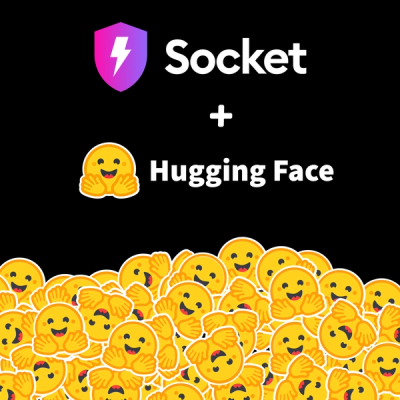
Product
Unify Your Security Stack with Socket Basics
A single platform for static analysis, secrets detection, container scanning, and CVE checks—built on trusted open source tools, ready to run out of the box.
backbone-to-sails
Advanced tools
Backbone SDK for communicating with Sails.js over Socket.io.
This has been a long time coming.
Our team has been using this kind of setup with Sails on top of Backbone for almost two years, and I've made plenty of mistakes along the way. So this time, with the first open-source version, I wanted to start small-- keep it simple and clean, without touching more of the Backbone core than absolutely necessary.
So currently, this SDK just replaces the default Backbone.sync function with a Sails.js-flavored socket.io transport. That may change in the future, but any extensions to this functionality will be configurable and opt-in.
Copy sails.io.backbone.js into your project and set it up to load in your HTML file.
It should be included after jQuery, _, backbone, socket.io.js, and sails.io.js.
That's it!
There is no special usage for sending requests-- everything works just like you would normally with Backbone via HTTP. Just be sure and wait for the socket to be connected first! Otherwise you'll see an ugly, but hopefully descriptive) error message.
For example:
socket.on('connect', function socketReady() {
var Twinkies = Backbone.Collection.extend({ url: '/twinkie '});
var someTwinkies = new Twinkies();
someTwinkies.fetch();
someTwinkies.on('sync', function () {
var myTwinkie = someTwinkies.get(1);
myTwinkie.wasEaten = true;
myTwinkie.save();
// If there are two many twinkies, throw one away... :\
// What if they're multiplying?!
if (someTwinkies.length > 5) {
var suspiciousTwinkie = someTwinkies.get(2);
suspiciousTwinkie.destroy();
}
});
})
This SDK adds a comet event to the global Backbone object:
Backbone.on('comet', function ( message ) {
// You'll want to do different stuff depending on what's in `message`.
// The structure of `message` is very important. It can vary, depending on
// how you choose to implement your backend, but it should always be an object.
//
// Currently in Sails v0.9.x, if you are using publishCreate(), publishUpdate(), etc.
// the top-level of message has a predefined format.
//
// In Sails v0.10, the format of `message` will be completely up to you.
})`
In Sails, subscription happens on the server. This is the only way to securely implement realtime updates.
In order for your socket to receive published messages at all, you must first send a request using the socket to an endpoint (i.e. route, url, pick your favorite term) which subscribes to one or more model instances.
If you're new to pubsub in Sails, or for a refresher on server-side usage, check out the docs on the Sails website: http://sailsjs.com/#!documentation/sockets
And the screencasts here: http://irlnathan.github.io/sailscasts/blog/2013/09/15/episode-20-adding-real-time-events-to-models-in-4-lines-of-code/
Let's say we have a little something-something on the backend reachable at GET /twinkie/subscribe.
On the server, GET /twinkie/subscribe might look like:
// TwinkieController.js in Sails
// ...
subscribe: function (req, res) {
Twinkie.subscribe(req.socket, req.param('id'));
res.json({ success: true });
}
// ...
On the client, we'll send a request to the endpoint which subscribes us. (using the socket!)
// On the client:
socket.get('/user/subscribe', { id: 7 }, function (response) {
// cool now we're subscribed to the twinkie #7.
// That means we can receive comet events whenever the server publishes anything to twinkie #7!
Backbone.on('comet', function ( message ) {
console.log('Got the latest on our twinkie:', message);
});
});
The built-in API blueprints in Sails automatically manage publish and subscribe on the server for you. All you have to do to subscribe to a model is call the find blueprint. I'll extend our twinkie example:
// Define our collection
var Twinkies = Backbone.Collection.extend({ url: '/twinkie '});
// Instantiate our collection
var someTwinkies = new Twinkies();
socket.on('connect', function socketReady() {
// Initiate the first fetch of twinkies
// Since we're using the Sails blueprints, we'll also be subscribed
// to each of the twinkies that are returned, as well as the Twinkie class room itself.
someTwinkies.fetch();
someTwinkies.on('sync', function () {
var myTwinkie = someTwinkies.get(1);
myTwinkie.wasEaten = true;
// Updates the twinkie
//
// And since we're using blueprints, publishes a message about the update
// to anyone subscribed to the twinkie.
//
// This also works if this save() resulted in a create-- it just uses the class room
// instead of the instance room. See the Sails docs for more on that-- it's going
// to change in v0.10.
myTwinkie.save();
// If there are two many twinkies, throw one away... :\
// What if they're multiplying?!
if (someTwinkies.length > 5) {
var suspiciousTwinkie = someTwinkies.get(2);
// Destroys the suspcious twinkie
// And since we're using blueprints, it also unsubscribes us from the twinkie,
// which means we won't hear any future updates about it
// (not that there should be any-- this is mainly for efficiency)
//
// The blueprints also publishing a message indicating that the twinkie
// was deleted so that any other sockets subscribed can update their UI
// accordingly.
suspiciousTwinkie.destroy();
}
});
});
// Listen for updates from the server
Backbone.on('comet', function ( message ) {
if ( message.model !== 'twinkie' ) {
console.error(
'Unrecognized comet message received from server-- ' +
'I only know how to handle Twinkies!!!'
);
}
switch (message.method) {
case 'create': Twinkies.add(message.data); break;
case 'update': Twinkies.get(message.id).set(message.changes); break;
case 'destroy': Twinkies.remove(Twinkes.get(message.id)); break;
}
})`
i.e. How does this connect to the Sails server?
Currently, this SDK expects active socket to be located at
window.socket, Backbone.socket or the socket property on
the instance of the specific model/collection communicating w/
the server. See inline comments if you want to change it.
i.e. How does this send messages to the Sails server?
This client will emit socket requests to URLs, which will be interpreted and routed by Sails accordingly, whether they are to custom URLs in your routes.js file or automatic API blueprints.
e.g. if your Backbone collection's URL is '/todo', calling fetch()
will still contact the Sails backend at GET /todo-- but now it will
use Socket.io to emit a packet on the connected socket instead of
sending an HTTP request.
i.e. What happens when comet messages arrive?
When your Sails publishes a message using Foo.publish, the name of
the socket event is always 'message'. This SDK examines all incoming
messages from Sails, then triggers a comet event on the Backbone
global.
Build sails.io.$.js as a replacement for sails.io.js and make it a dependency of this library. This allows us to do a better job at simulating an XHR object, and should make it possible for other folks to rapidly integrate other jQuery-dependent frameworks as needed.
Built-in auto-synchronization for Backbone.Collection and Backbone.Models, accomplished by expecting a standard CRUD-compatible format in the published messages from the server. Figuring out that format, and making it reasonably configurable, is the real challenge here.
Ability to pass in a connected socket as an option to fetch/save/etc. as an alternative to stuffing it in a conventional place (i.e. window.socket, Backbone.socket, etc.)
If Backbone tries to talk to the server and the socket is missing or disconnected, fall back to $.ajax. Should be configurable, with at least three distinct possibilities:
$.ajax, but log a warning.$.ajax silently (production)Somewhere (but probably in the aforementioned sails.io.$.js or sails.io.js) create a queue which tracks requests intended for the server that were sent before the socket connects. If the queue gets too large, or the socket hasn't connected after 10-15 seconds, give up and release the simulated XHR objects with errors explaining the situation. This lets us ignore connection/disconnection logic, which should dramatically simplify things for beginners.
MIT bro
FAQs
Backbone SDK for communicating with Sails.js over Socket.io
We found that backbone-to-sails demonstrated a not healthy version release cadence and project activity because the last version was released a year ago. It has 1 open source maintainer collaborating on the project.
Did you know?

Socket for GitHub automatically highlights issues in each pull request and monitors the health of all your open source dependencies. Discover the contents of your packages and block harmful activity before you install or update your dependencies.

Product
A single platform for static analysis, secrets detection, container scanning, and CVE checks—built on trusted open source tools, ready to run out of the box.

Product
Socket is launching experimental protection for the Hugging Face ecosystem, scanning for malware and malicious payload injections inside model files to prevent silent AI supply chain attacks.

Research
/Security News
The Socket Threat Research Team uncovered a coordinated campaign that floods the Chrome Web Store with 131 rebranded clones of a WhatsApp Web automation extension to spam Brazilian users.